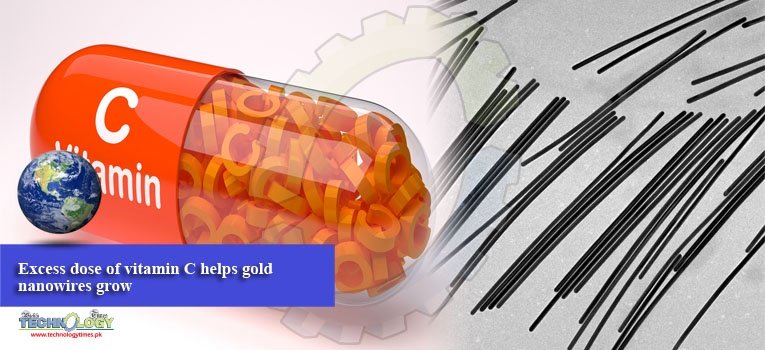A boost of vitamin C helped Rice University scientists turn small gold nanorods into fine gold nanowires.

The Rice lab’s nanorods are about 25 nanometers thick at the start of the process and remain that way while their length grows to become long nanowires. Above 1,000 nanometers in length, the objects are considered nanowires, and that matters.
The wires’ aspect ratio length over width dictates how they absorb and emit light and how they conduct electrons. Combined with gold’s inherent metallic properties, that could enhance their value for sensing, diagnostic, imaging and therapeutic applications.
The nanowires’ plasmonic response can be tuned to emit light from visible to infrared and theoretically far beyond, depending on their aspect ratios.
The process is slow, so it takes hours to grow a micron-long nanowire. “In this paper, we only reported structures up to 4 to 5 microns in length,” Zubarev said. But we’re working to make much longer nanowires.
“The tips also have five faces, but they have a different arrangement of atoms,” he said. The energy of those atoms is slightly lower, and when new atoms are deposited there, they don’t migrate anywhere else.
That keeps the growing wires from gaining girth. Every added atom increases the wire’s length, and thus the aspect ratio.
The nanorods’ reactive tips get help from a surfactant, CTAB, that covers the flat surfaces of nanorods. The surfactant forms a very dense, tight bilayer on the sides, but it cannot cover the tips effectively, Zubarev said.
The most valuable feature is that it is truly one-dimensional elongation of nanorods to nanowires.It does not change the diameter, so in principal we can take small rods with an aspect ratio of maybe two or three and elongate them to 100 times the length.
He said the process should apply to other metal nanorods, including silver. The National Science Foundation and Welch Foundation supported the research.